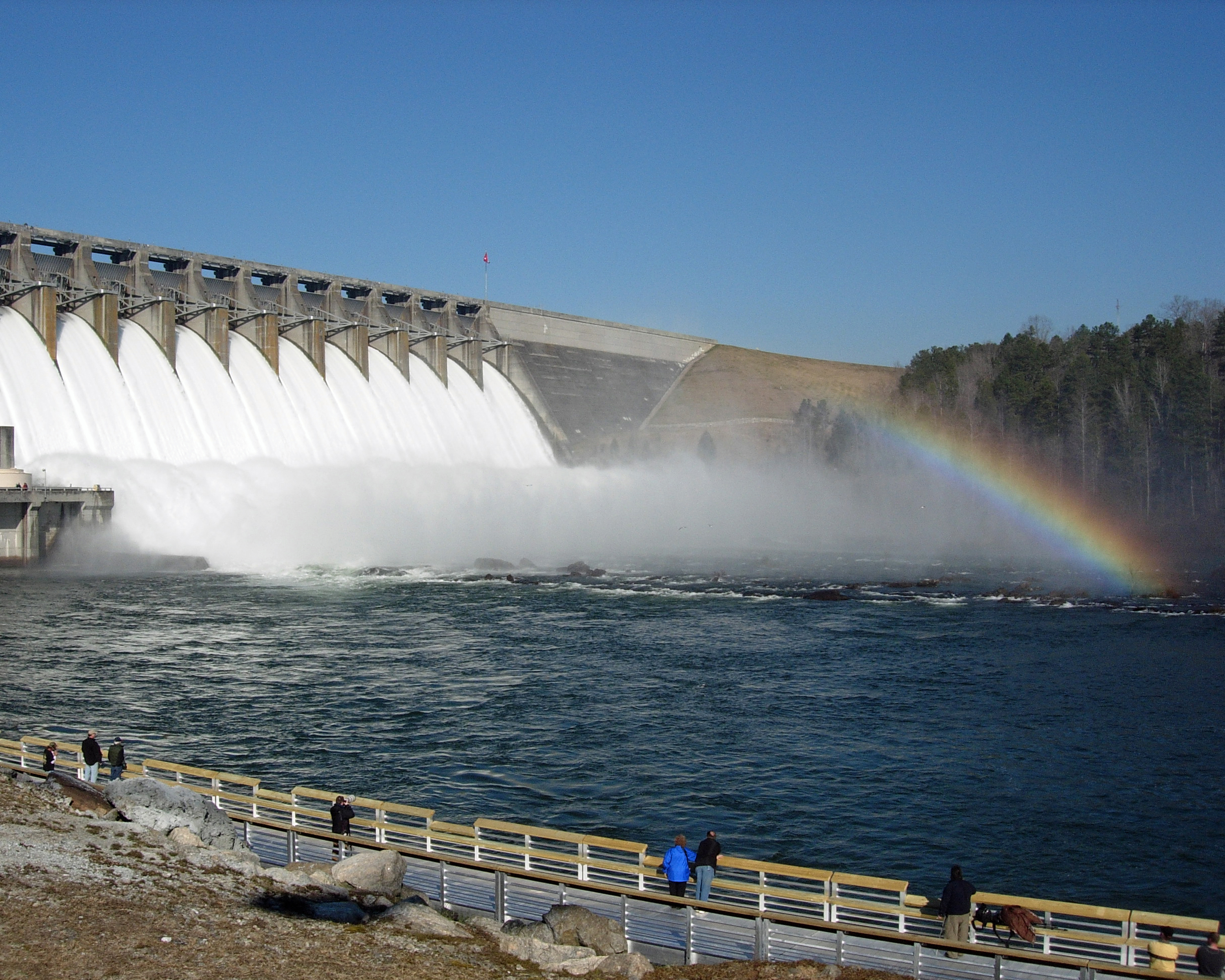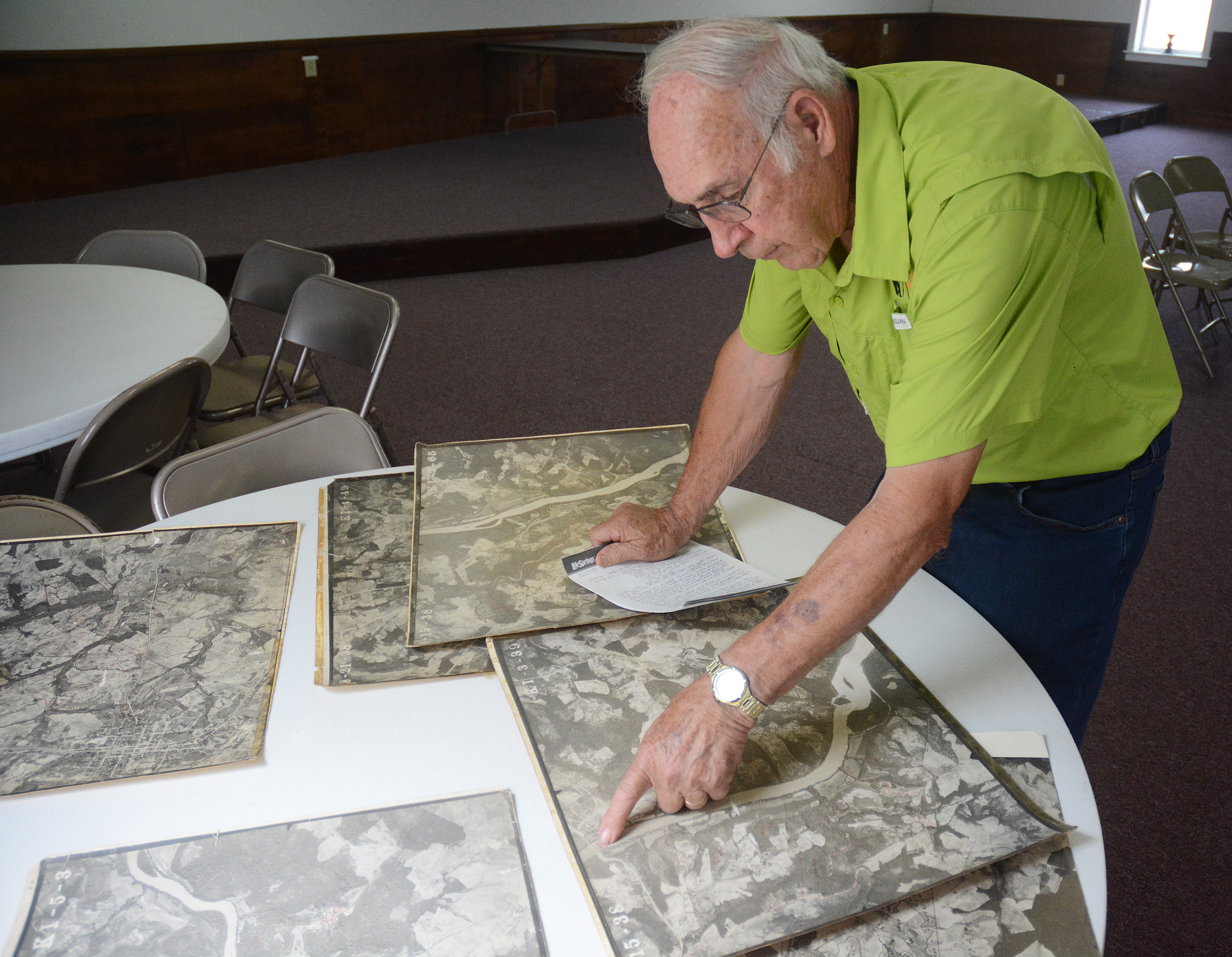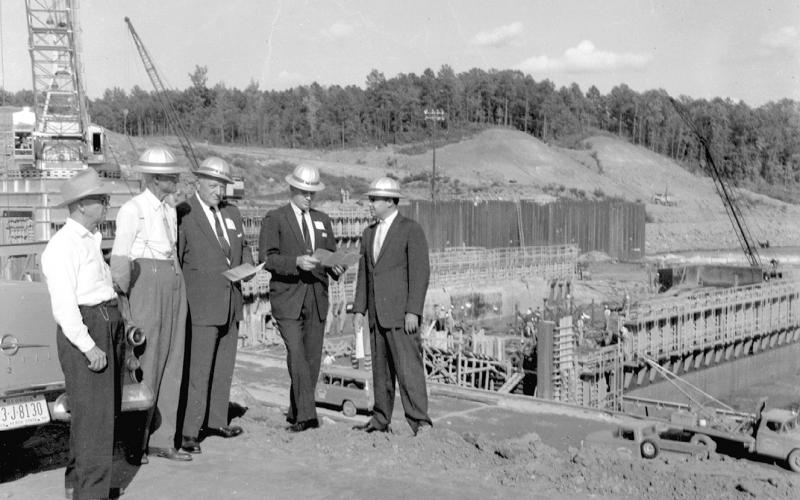Fog used to settle in the bottomland in the 1940s and hang over the Savannah River as it meandered its way from Hart County to the Atlantic Ocean, blanketing the rolling foothills of Northeast Georgia and the farms that dotted the landscape. Dirt roads crisscrossed the hills, connecting farms and...
Fog used to settle in the bottomland in the 1940s and hang over the Savannah River as it meandered its way from Hart County to the Atlantic Ocean, blanketing the rolling foothills of Northeast Georgia and the farms that dotted the landscape.
Dirt roads crisscrossed the hills, connecting farms and communities like Sardis and Alford to places across the river in South Carolina and beyond via bridges like the Alford’s Steel Bridge.
Dean Teasley walked those dirt roads as a child and teenager, heading to family and friends’ homes or to town in Hartwell, where farmers and merchants would do business on weekends. He remembers vividly the fog from his days in the field, working first with a mule-drawn plow and later on a tractor.
“You could stand up on the hillside and see fog, the fog that went down the river,” the now 80-yearold Teasley recalls. “I can picture that in my mind right now. that fog would stay there until it warmed up, about 10 or 11 o’clock.”
At that time, farmers were raising an ample amount of cotton in Hart County and the surrounding areas, Teasley said. It was a different time, a time when people sat on front porches until late into the evening talking about the day’s work, or perhaps a little small-town gossip. Children found their entertainment through games they created, running through the woods or cooling off in the river with a dip.
“We didn’t have TV until the mid-1950s here, so everyone sat on their front porch into the night and talked,” Teasley remembers. “And of course, we listened to the radio a lot.”
His family was so enthralled by the new technology that they drove out to see the first radio station built in Hart County when it opened.
The arrival of televisions in Hart County came with another major, modern development that forever altered the landscape and the course of history for Hart County and the surrounding counties.
The U.S. Army Corps of Engineers began construction on the Hartwell Dam in 1955, after the project was authorized by the Flood Control Act of 1950. The dam would not only control flooding in places down river like Augusta, but would also produce hydroelectric power via four hydroelectric generators with a combined 264-megawatt capacity. Room for a fifth generator was designed into the dam that would eventually span a total of more than 15,000 feet when the earthen and concrete structure was combined.
The project meant the birth of Lake Hartwell, the 56,000-acre reservoir with more than 960 miles of shoreline we all know today.

For Teasley’s family and many others in Hart County, the dam project marked a major transition, one that was both welcomed and reviled at the same time.
“Up until the dam was built, it was just a completely different county, you know,” he said.
“Everybody was farming. I don’t know if I can tell you how many, but there were a lot of farmers and a good many had to move. A lot of folks from our area ended up in the Goldmine Airline area (of Hart County).”
Many of those farmers were less than enthusiastic about having to move from the land they had tilled, some for several generations, in the name of progress. Teasley remembers property being purchased by the Corps for $75 to $100 per acre.
“A lot of those farmers thought they were ruined,” he said. “Bottom land (by the river), that was prime land.”
The feelings were mutual on the other side of the Savannah River as well.
“In the Carolinas, there was an old woman who would bounce a few rifle balls off the bulldozers. That’s the truth,” Teasley said.
His family’s land was where the Army Corps offices sit today, and where Watsadler Campground offers campers spectacular views of Lake Hartwell’s big water.

Teasley pointed out his family’s property recently on aerial photographs taken of Hart County in 1938 by the Corps. He showed where roads, now submerged deep under the lake, used to wind through the farmland and where they crossed the Savannah River on bridges like the long and narrow span that carried motorists traveling Old Highway 29 into South Carolina, or the Alford’s Steel Bridge, which was roughly where the dam is today. The remnants of the Old Highway 29 bridge today rest silently under the lake not far from the Long Point Recreation Area, perhaps a healthy habitat for the thriving fish populations that attract many thousands of anglers every year.
“We traveled those bridges many times,” Teasley said.
He pointed out in the aerial photos where the Tugaloo and Seneca rivers meet to form the Savannah River, an area now under Lake Hartwell, roughly 45 miles of the Tugaloo and Seneca stretching to the north.
By 1957, Teasley was 18 and on his own working as a surveyor. Although much of his family’s property was to be submerged upon the dam’s completion, the construction presented an opportunity. Teasley began surveying on the project and worked on it until it began operating in 1962.
He was there when the first concrete was poured.
“It just got taller and taller,” Teasley said. “It was interesting for me because I got to see just about every phase of it.”
Concrete-filled forms laid out by construction crews in 7- to 8-foot sections, little by little growing taller and eventually reaching its 204-foot apex and 1,900-foot length.
“They would pour 7- or 7-1/2-foot pours, then they would go in and wash it down. Then you do a new layout for the next set of forms for whatever the piece of equipment went in there,” Teasley said. “It just slowly went up. They had viewing stands on both the Georgia and South Carolina side, and you would see people watching the construction.”
All the while, life in Hartwell went on much like it always had. Movies at the Emily or Judy theaters, complete with a drink and popcorn or candy, went for 26 cents. Basketball teams from the community schools peppered throughout Hart County competed for area championships. Farmers plowed their fields and went to town on Saturday to shop at retail staples like Bailes-Cobb or Gallant-Belk. Haircuts cost a quarter and teenagers found their entertainment at the local bowling alley or skating rink.
Slowly but surely, as farmers moved from where the lake would eventually be, homes, barns, churches and even the Alford School were razed. Cemeteries were moved and progress on the dam steadily pushed forward toward a new Hart County.
Once the dam was finished, Teasley remembers it taking only about a year to fill up.
“They were saying it would take several years, but it was a rainy season and it filled it right up,” Teasley said.
He remembers a smell of sulfur as vegetation rotted under the new conditions.
People eventually began to get used to the new Hart County. As time passed, the vestiges of the old Hartwell gave way to a different sort of community. Farming and agriculture were still important cogs in the economic wheel, as they still are today, but a new sort of industry began to appear — tourism. Lake houses that only a couple of decades ago would have been in the middle of a field were built along the shoreline and with them came new residents and visitors.
“It brought a lot of people in over the years,” Teasley said of the lake.
“We got a lot of people in from up North, from Florida and out from Atlanta. When we were growing up you pretty well knew every family in the whole county. If you knew one group of people, you could tie it in to someone else.”
Hart County continues to grow today. Several high-tech industries have moved in with the promise of thousands of new jobs emerging in the next five to 10 years. Subdivisions have popped up around the lake and downtown Hartwell remains a hub for shopping and dining.
Hard feelings about the lake simmered for a while, Teasley said, but with time, many of the people who were angry realized they could still farm the land and maybe make a little extra money with real estate.
“It definitely changed Hart County,” he said. “It took several years for people to see the benefit. For a while they only looked at the negative. But then they saw they could sell lots on the lake.”

